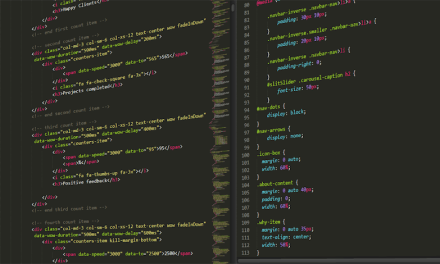Table of Contents
“Unlock the power of HR technology with a comprehensive guide for 2024.”
Introduction
Understanding HRIS: A Comprehensive Guide for 2024 is a detailed resource that provides in-depth information on Human Resource Information Systems (HRIS) and their importance in modern organizations. This guide covers various aspects of HRIS, including their functions, benefits, implementation, and best practices for maximizing their effectiveness. Whether you are a HR professional looking to enhance your knowledge or a business owner seeking to streamline your HR processes, this guide is a valuable tool for understanding and utilizing HRIS effectively in the year 2024.
Benefits of Implementing HRIS in Your Organization

In today’s fast-paced business environment, organizations are constantly looking for ways to streamline their processes and improve efficiency. One way to achieve this is by implementing a Human Resource Information System (HRIS). HRIS is a software solution that helps organizations manage their human resources functions more effectively. From recruitment and onboarding to payroll and performance management, HRIS can automate and streamline many HR processes, saving time and reducing the risk of errors.
One of the key benefits of implementing HRIS in your organization is improved data management. With HRIS, all employee data is stored in a centralized database, making it easy to access and update. This eliminates the need for manual record-keeping and reduces the risk of data entry errors. Additionally, HRIS can generate reports and analytics on various HR metrics, such as employee turnover, training costs, and performance evaluations. This data can help HR professionals make informed decisions and identify areas for improvement within the organization.
Another benefit of HRIS is increased efficiency. By automating routine HR tasks, such as payroll processing and benefits administration, HRIS frees up HR professionals to focus on more strategic initiatives. This can lead to cost savings and improved productivity within the organization. Additionally, HRIS can streamline the recruitment and onboarding process, making it easier to attract and retain top talent. By providing a seamless and user-friendly experience for both employees and managers, HRIS can help create a positive work environment and improve employee satisfaction.
Furthermore, HRIS can enhance compliance with labor laws and regulations. By automating processes such as time tracking and leave management, HRIS can help ensure that the organization is in compliance with labor laws and regulations. Additionally, HRIS can track employee certifications and training requirements, making it easier to ensure that employees are up to date on necessary training and certifications. This can help reduce the risk of fines and penalties for non-compliance.
In addition to improving data management, efficiency, and compliance, HRIS can also enhance employee engagement and satisfaction. By providing employees with self-service tools, such as online portals for accessing pay stubs and benefits information, HRIS can empower employees to take control of their own HR needs. This can lead to increased employee satisfaction and loyalty, as employees feel more engaged and valued by the organization. Additionally, HRIS can facilitate communication between employees and managers, making it easier to provide feedback and address concerns in a timely manner.
Overall, implementing HRIS in your organization can have a wide range of benefits, from improved data management and efficiency to enhanced compliance and employee engagement. By investing in HRIS, organizations can streamline their HR processes, reduce costs, and create a more positive work environment for employees. As technology continues to evolve, HRIS will become an essential tool for organizations looking to stay competitive in the modern business landscape.
Key Features to Look for in an HRIS System
In today’s fast-paced business environment, Human Resource Information Systems (HRIS) have become essential tools for managing HR functions efficiently. With the rapid advancements in technology, HRIS systems have evolved to offer a wide range of features that can streamline HR processes and improve overall organizational performance. As businesses continue to rely on HRIS systems to manage their workforce effectively, it is crucial for HR professionals to understand the key features to look for in an HRIS system in 2024.
One of the most important features to consider when choosing an HRIS system is its ability to automate repetitive tasks. Automation can significantly reduce the time and effort required to perform routine HR tasks such as payroll processing, employee onboarding, and performance evaluations. By automating these tasks, HR professionals can focus on more strategic initiatives that can drive business growth and improve employee engagement.
Another key feature to look for in an HRIS system is its integration capabilities. An HRIS system that can seamlessly integrate with other business systems such as accounting software, time and attendance systems, and recruitment platforms can help streamline data sharing and improve overall data accuracy. Integration capabilities can also enable HR professionals to access real-time data and make informed decisions based on up-to-date information.
Data analytics is another essential feature to consider when choosing an HRIS system. HRIS systems that offer robust data analytics capabilities can help HR professionals gain valuable insights into workforce trends, employee performance, and organizational effectiveness. By analyzing data, HR professionals can identify areas for improvement, track key performance indicators, and make data-driven decisions that can drive business success.
Employee self-service functionality is another key feature to look for in an HRIS system. Employee self-service portals allow employees to access and update their personal information, request time off, view pay stubs, and participate in training programs. By empowering employees to manage their own HR tasks, HR professionals can reduce administrative burden and improve overall employee satisfaction.
Mobile accessibility is also an important feature to consider when choosing an HRIS system. In today’s digital age, employees expect to access HR information anytime, anywhere, using their mobile devices. An HRIS system that offers mobile accessibility can help improve employee engagement, productivity, and satisfaction by providing employees with easy access to HR resources on the go.
In conclusion, understanding the key features to look for in an HRIS system is essential for HR professionals in 2024. By choosing an HRIS system that offers automation, integration, data analytics, employee self-service, and mobile accessibility, HR professionals can streamline HR processes, improve data accuracy, and drive business success. As businesses continue to rely on HRIS systems to manage their workforce effectively, it is crucial for HR professionals to stay informed about the latest trends and technologies in HRIS systems to ensure they are making the best choices for their organizations.
Common Challenges in Implementing HRIS and How to Overcome Them
Implementing a Human Resource Information System (HRIS) can be a game-changer for organizations looking to streamline their HR processes and improve overall efficiency. However, like any major system implementation, there are common challenges that organizations may face when implementing an HRIS. In this article, we will explore some of these challenges and provide strategies for overcoming them.
One of the most common challenges in implementing an HRIS is resistance from employees. Change can be difficult for many people, and the introduction of a new system can be met with skepticism and resistance. To overcome this challenge, it is important for organizations to communicate the benefits of the HRIS to employees and involve them in the implementation process. Providing training and support for employees as they learn to use the new system can also help to alleviate resistance.
Another challenge that organizations may face when implementing an HRIS is data migration. Transferring data from existing systems to the new HRIS can be a complex and time-consuming process, and errors in data migration can have serious consequences for the organization. To overcome this challenge, organizations should carefully plan the data migration process, ensuring that data is clean and accurate before transferring it to the new system. Testing the data migration process thoroughly before going live with the HRIS can help to identify and address any issues before they become problematic.
Integration with existing systems is another common challenge in implementing an HRIS. Many organizations have multiple systems in place for different HR functions, such as payroll, benefits administration, and performance management. Integrating these systems with the new HRIS can be a complex process, requiring careful planning and coordination. To overcome this challenge, organizations should work closely with their HRIS vendor to ensure that the new system can integrate seamlessly with existing systems. Testing the integration thoroughly before going live with the HRIS can help to identify and address any issues before they impact the organization.
Security and data privacy are also major concerns when implementing an HRIS. HRIS systems contain sensitive employee data, such as personal information, payroll details, and performance evaluations. Ensuring the security of this data is crucial to protecting the organization and its employees from potential data breaches. To overcome this challenge, organizations should work with their HRIS vendor to implement robust security measures, such as encryption, access controls, and regular security audits. Training employees on data security best practices can also help to prevent data breaches and protect sensitive information.
In conclusion, implementing an HRIS can bring many benefits to organizations, but it is not without its challenges. By addressing common challenges such as resistance from employees, data migration, integration with existing systems, and security and data privacy concerns, organizations can successfully implement an HRIS and reap the rewards of improved efficiency and streamlined HR processes. By carefully planning and executing the implementation process, organizations can overcome these challenges and set themselves up for success in 2024 and beyond.
Best Practices for Maximizing the Potential of Your HRIS System
In today’s fast-paced business environment, Human Resource Information Systems (HRIS) have become an essential tool for managing HR functions efficiently. HRIS software helps organizations streamline their HR processes, improve data accuracy, and enhance decision-making. However, to fully leverage the potential of an HRIS system, organizations need to adopt best practices that align with their business goals and objectives.
One of the key best practices for maximizing the potential of your HRIS system is to ensure that it is properly integrated with other systems within the organization. This includes integrating the HRIS with payroll, time and attendance, and performance management systems. By integrating these systems, organizations can eliminate duplicate data entry, improve data accuracy, and streamline processes. This integration also allows for better reporting and analytics, enabling HR professionals to make data-driven decisions.
Another best practice for maximizing the potential of your HRIS system is to regularly update and maintain the system. This includes keeping the software up to date with the latest upgrades and patches, as well as ensuring that data is accurate and current. Regular maintenance of the HRIS system helps prevent data errors, system crashes, and security breaches. It also ensures that the system continues to meet the organization’s evolving needs and requirements.
Training and development are also essential best practices for maximizing the potential of your HRIS system. Providing training to HR professionals on how to use the system effectively can help improve user adoption and ensure that the system is being utilized to its full potential. Additionally, ongoing training and development can help HR professionals stay up to date on new features and functionalities of the HRIS system, enabling them to leverage these capabilities to improve HR processes and outcomes.
Data security is another critical best practice for maximizing the potential of your HRIS system. Organizations must implement robust security measures to protect sensitive HR data from unauthorized access, breaches, and cyber threats. This includes encrypting data, implementing access controls, and regularly monitoring and auditing the system for any security vulnerabilities. By prioritizing data security, organizations can safeguard their HR data and maintain the trust of employees and stakeholders.
Lastly, organizations should regularly evaluate the performance of their HRIS system to identify areas for improvement and optimization. This includes conducting regular audits of the system, gathering feedback from users, and analyzing key performance metrics. By continuously monitoring and evaluating the performance of the HRIS system, organizations can identify opportunities for enhancement, address any issues or challenges, and ensure that the system continues to support the organization’s HR goals and objectives.
In conclusion, maximizing the potential of your HRIS system requires a strategic approach that aligns with your organization’s business goals and objectives. By adopting best practices such as system integration, regular maintenance, training and development, data security, and performance evaluation, organizations can leverage their HRIS system to streamline HR processes, improve data accuracy, and enhance decision-making. By following these best practices, organizations can unlock the full potential of their HRIS system and drive business success in 2024 and beyond.
Q&A
1. What does HRIS stand for?
HRIS stands for Human Resources Information System.
2. What are the main functions of HRIS?
The main functions of HRIS include payroll, benefits administration, time and attendance tracking, recruitment, performance management, and employee self-service.
3. How can HRIS benefit an organization?
HRIS can benefit an organization by streamlining HR processes, improving data accuracy, increasing efficiency, enhancing decision-making, and providing better access to information for employees.
4. What are some key considerations when implementing an HRIS?
Some key considerations when implementing an HRIS include selecting the right system for your organization’s needs, ensuring data security and compliance, providing adequate training for users, and regularly evaluating and updating the system.
Conclusion
Understanding HRIS: A Comprehensive Guide for 2024 provides a thorough overview of Human Resource Information Systems and their importance in modern organizations. The guide covers key concepts, benefits, implementation strategies, and best practices for utilizing HRIS effectively. Overall, it is a valuable resource for HR professionals looking to enhance their understanding and utilization of HR technology in the coming years.




